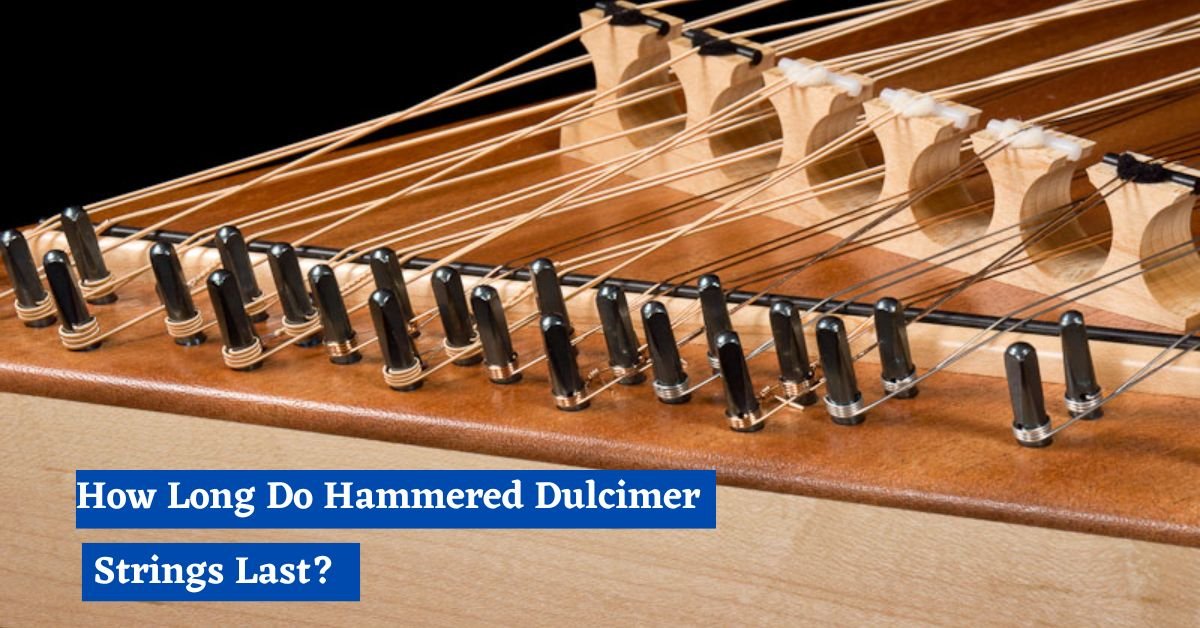Physical Address
304 North Cardinal St.
Dorchester Center, MA 02124
Physical Address
304 North Cardinal St.
Dorchester Center, MA 02124


How Long Do Hammered Dulcimer Strings Last: The lifespan of hammered dulcimer strings varies depending on factors like frequency of use and environmental conditions but typically ranges from 6 to 12 months.
The composition of hammered dulcimer strings primarily comprises steel, phosphor bronze, or a blend of both materials. These metals are chosen for their distinct tonal qualities and resilience to stress during play. However, the specific composition may vary depending on the manufacturer and player preferences.

The lifespan of hammered dulcimer strings can be influenced by the following factors:
Identifying worn-out hammered dulcimer strings can be done by paying attention to the following indicators:
To prolong the lifespan of hammered dulcimer strings, musicians can follow these tips:
Restringing a hammered dulcimer typically costs between $100 to $300. The cost may vary based on several factors, including the type and quality of strings used, the number of strings needing replacement, and any additional services provided by the instrument technician or luthier.

High-quality strings made from materials like steel or phosphor bronze will generally be more expensive, but they often offer superior tonal characteristics and increased durability. It is essential to consult with a qualified professional or music store to get an accurate estimate for restringing your specific hammered dulcimer model.
Cleaning hammered dulcimer strings is a vital part of instrument maintenance to ensure longevity and preserve sound quality. To clean the strings, follow these steps:
Regularly cleaning the strings after playing sessions will help prevent corrosion and maintain their tonal clarity.
The number of strings on a hammered dulcimer can vary depending on the model and the instrument’s size. Traditionally, hammered dulcimers have anywhere from around 30 to 100 strings, with the most common models having approximately 70 to 80 strings.

The strings are arranged in courses, with multiple strings grouped together and tuned to the same pitch. The bass strings are usually located on the left side, and the treble strings are on the right side of the instrument, providing a wide tonal range that contributes to the hammered dulcimer’s unique sound.
How often should I replace my hammered dulcimer strings?
The frequency of string replacement depends on various factors such as playing frequency, environmental conditions, and the quality of the strings. As a general guideline, players who practice regularly may need to replace their strings every 6 to 12 months.
Can I mix different string materials on my hammered dulcimer?
While it is possible to mix string materials, it is essential to be cautious about the tension and gauge of each string. Mismatched strings can lead to uneven stress distribution and affect the instrument’s sound quality.
How can I prevent my hammered dulcimer strings from rusting?
To prevent rusting, ensure the strings are dry and clean after each playing session. Additionally, store the instrument in a dry environment, and consider using a dehumidifier if necessary.
Can I use guitar strings as a replacement for my hammered dulcimer strings?
It is not recommended to use guitar strings as a replacement for hammered dulcimer strings, as they are designed for different instruments with varying tension and scale length. Using incompatible strings may result in damage to the hammered dulcimer or subpar sound quality.
The longevity of hammered dulcimer strings is influenced by various factors, such as material composition, playing techniques, and environmental conditions. By understanding these factors and adopting proper maintenance practices, musicians can extend the life of their strings and enjoy the dulcet tones of this mesmerizing instrument for years to come.
Regular cleaning, appropriate storage, and preemptive string replacements are essential aspects of maintaining the hammered dulcimer and preserving its enchanting sound. Whether you are a seasoned dulcimer player or a beginner, taking care of your instrument’s strings will ensure a harmonious musical journey filled with the dulcimer’s captivating melodies.